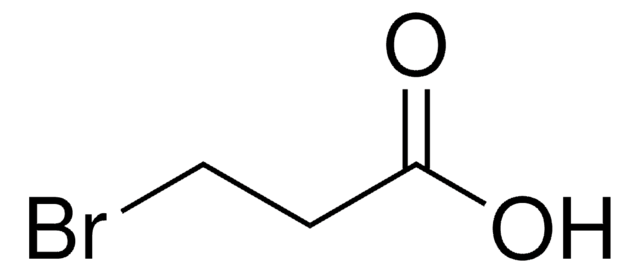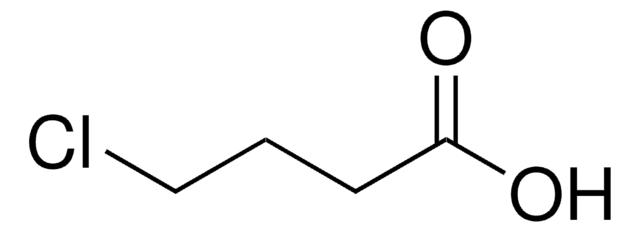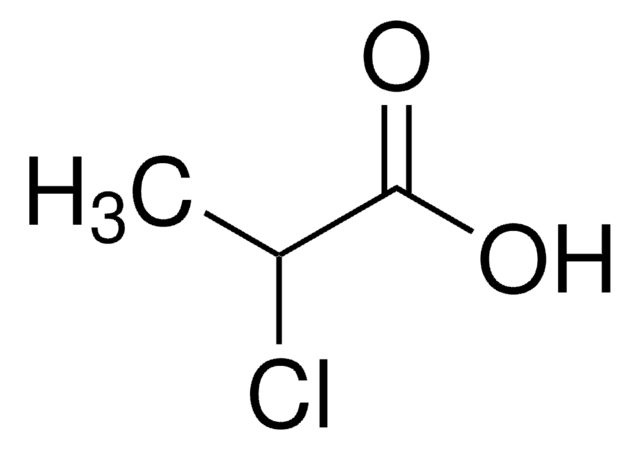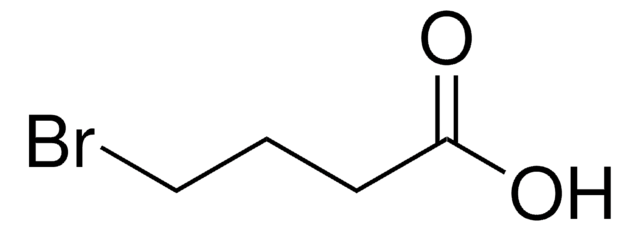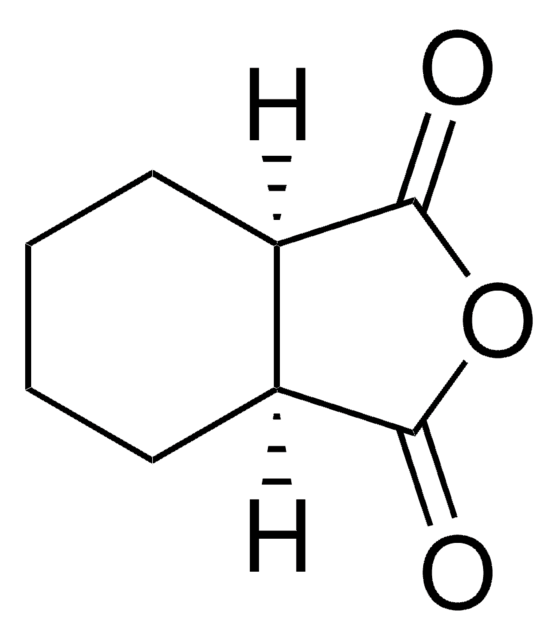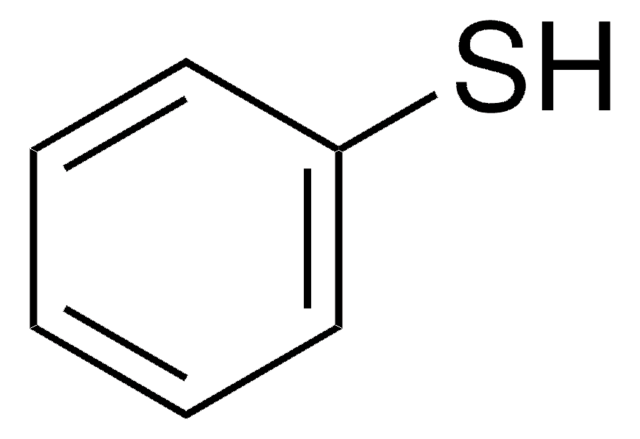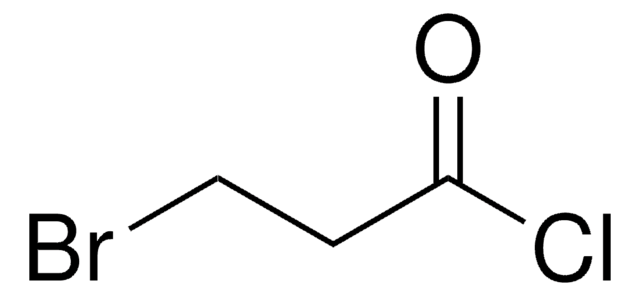About This Item
Recommended Products
Quality Level
Assay
98%
form
solid
bp
203-205 °C (lit.)
mp
35-40 °C (lit.)
solubility
H2O: soluble 50 mg/mL, clear, colorless
SMILES string
OC(=O)CCCl
InChI
1S/C3H5ClO2/c4-2-1-3(5)6/h1-2H2,(H,5,6)
InChI key
QEYMMOKECZBKAC-UHFFFAOYSA-N
Looking for similar products? Visit Product Comparison Guide
General description
Application
Signal Word
Danger
Hazard Statements
Precautionary Statements
Hazard Classifications
Skin Corr. 1A
Storage Class Code
8A - Combustible corrosive hazardous materials
WGK
WGK 1
Flash Point(F)
230.0 °F - closed cup
Flash Point(C)
110 °C - closed cup
Personal Protective Equipment
Certificates of Analysis (COA)
Search for Certificates of Analysis (COA) by entering the products Lot/Batch Number. Lot and Batch Numbers can be found on a product’s label following the words ‘Lot’ or ‘Batch’.
Already Own This Product?
Find documentation for the products that you have recently purchased in the Document Library.
Customers Also Viewed
Our team of scientists has experience in all areas of research including Life Science, Material Science, Chemical Synthesis, Chromatography, Analytical and many others.
Contact Technical Service